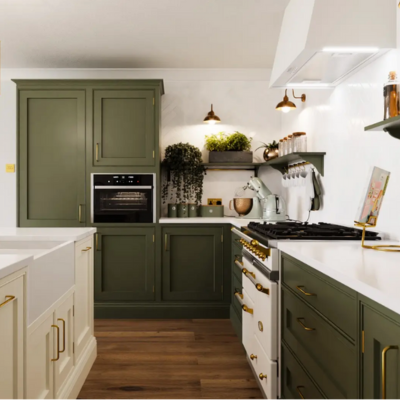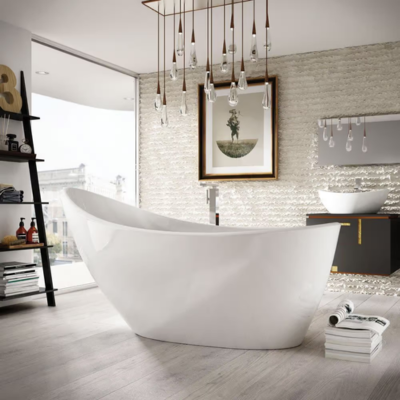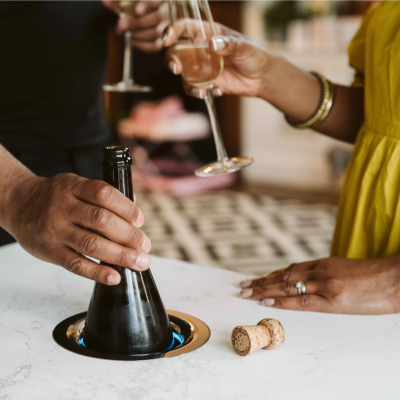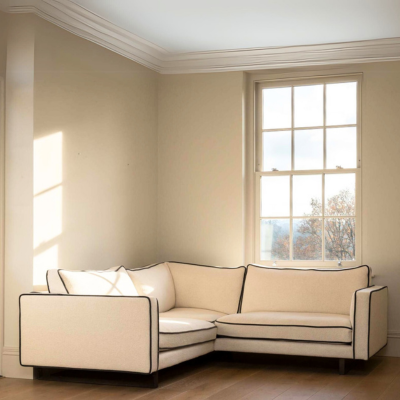There are so many different aspects to kitchen design, and choosing the right materials is just the tip of the iceberg. Mixing materials has emerged as a major design trend, giving you the ability to create a stylish space that is functional and uniquely personal to your tastes. Long gone are the days when you had to stick to one type of material; now, the beauty lies in blending various textures, colours, and finishes to craft a unique and cohesive look.
Whether you’re renovating your entire kitchen or just updating small elements, mixing materials can add depth and character to the heart of your home.
Mixing Materials - A new kitchen trend
When you mix materials in your kitchen, you’re getting a blend of both form and function. By combining different materials, you can create highly specific areas, like making a marble worktop the focal point against a more subdued wooden kitchen cabinet. This approach will not only enhance your aesthetic appeal but also improve functionality. Different materials have their own strengths, such as the durability of granite, the warmth of wood, or the sleekness and cleanliness of stainless steel.
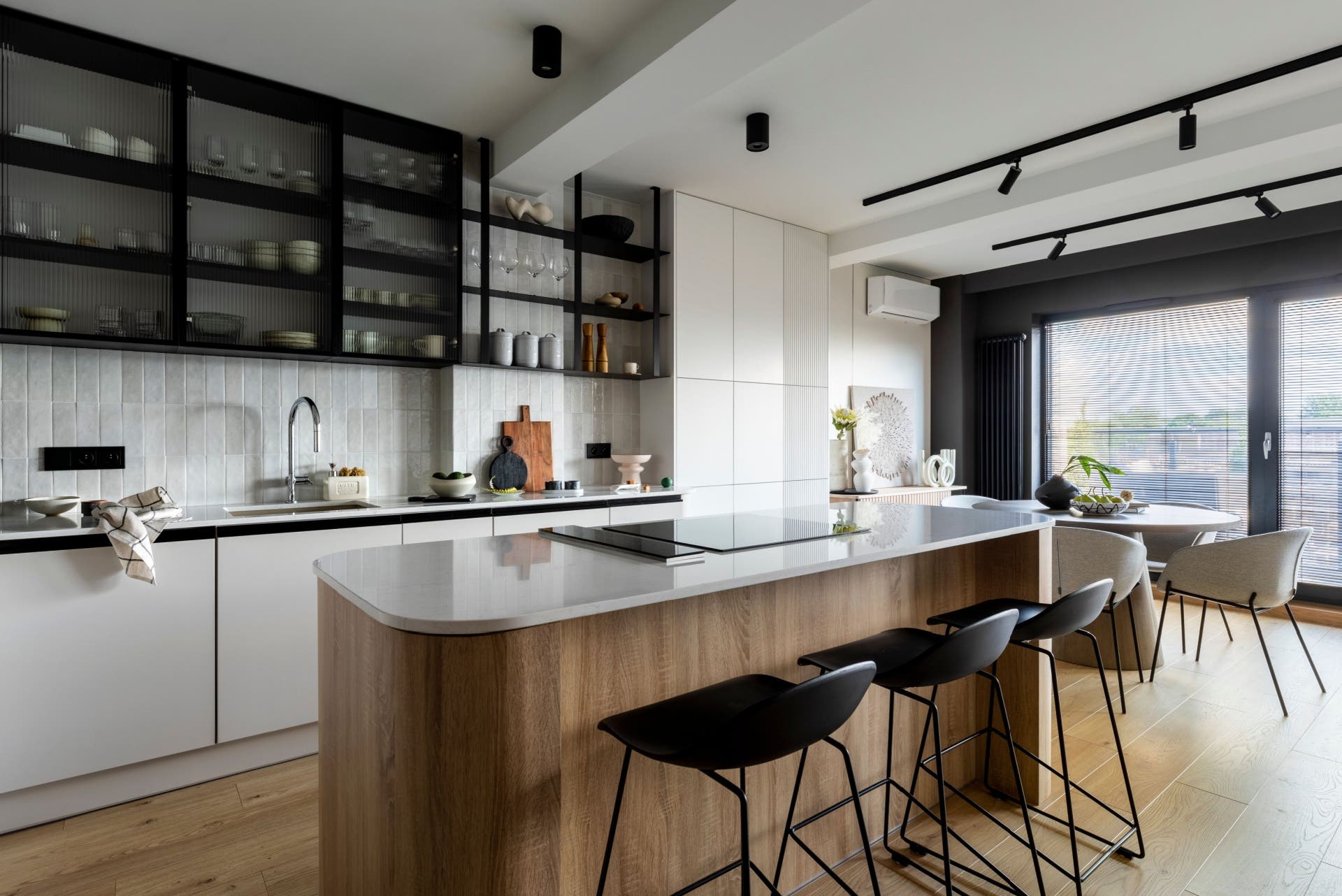

The benefits of mixing materials in a kitchen
Visual appeal
The biggest advantage of mixing materials in a kitchen is the visual interest it creates. Instead of a monotonous, single-material kitchen, blending different textures and finishes instantly creates a space that’s dynamic and unique.
Personalisation
By mixing materials, you can express your style. Whether you love the industrial look of concrete paired with metal or the classic elegance of marble and wood, you can create a kitchen that reflects your personality.
Functionality
The materials in your kitchen serve different purposes. By mixing them, you can create a more functional space. For example, a heat-resistant worktop like quartz might be juxtaposed with a section of wooden butcher block ideal for chopping and preparing food. This would give the kitchen designated spaces for function.
Create zones
The rise in popularity of mixing materials in a kitchen is linked to the rise in open-plan living. By using different materials in different areas, you create zones for specific parts of the kitchen. You might use a different material in the space where you eat in the kitchen, a different material for the cooking area, and so on. This can help to give an open-plan space more structure and organisation.
Cost Effective
Not all materials used in kitchen design come with the same price tag. By strategically mixing high-end with more affordable materials, you can achieve a luxurious look without breaking the bank. For example, pair an expensive marble island with more budget-friendly laminate worktops in less visible areas.
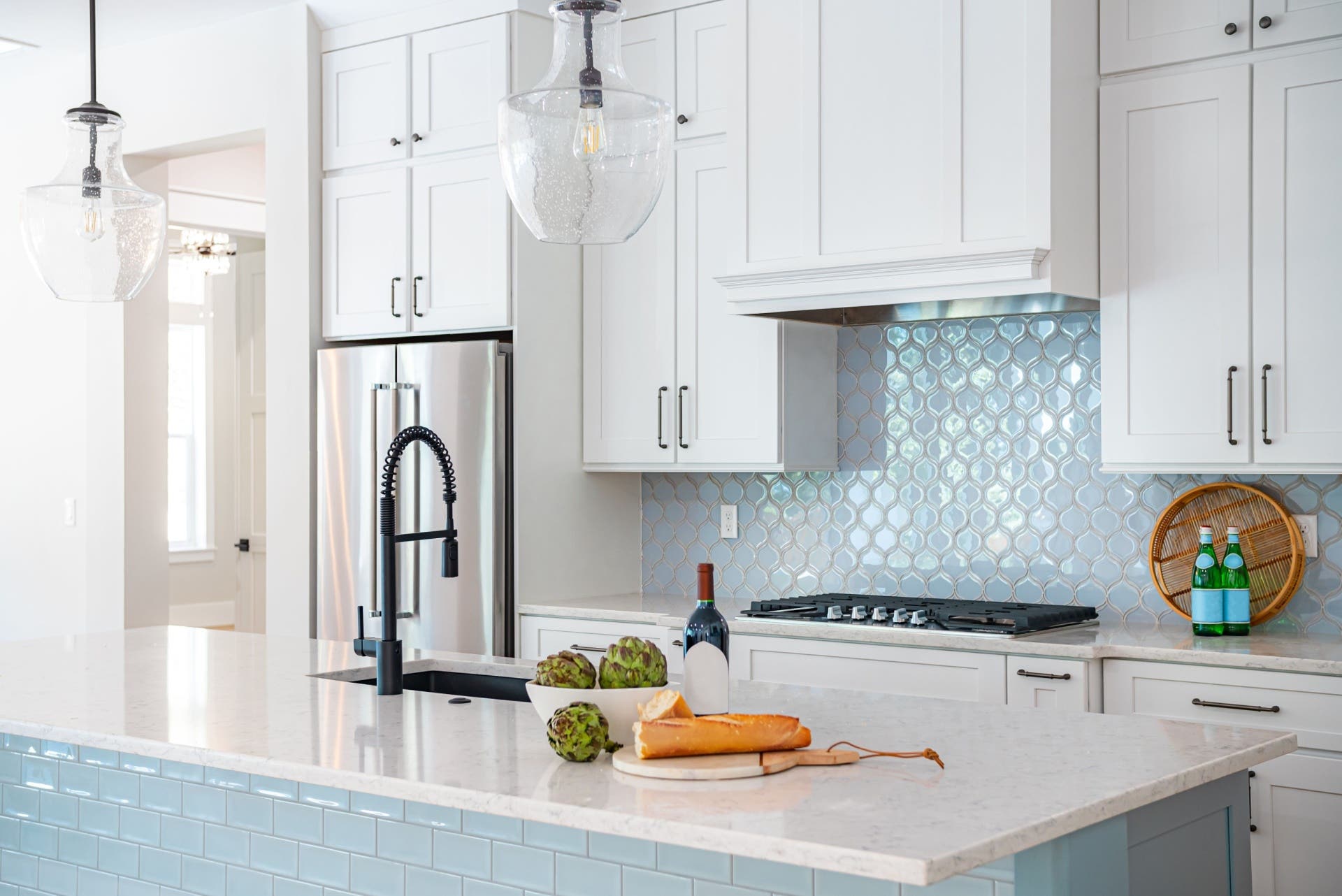

Material combinations to consider for a stylish kitchen
Wood and Stone
Combine the warmth of wood with the raw, textured feel of stone to create a balanced and inviting space. Stone is a great choice for kitchens that want to blend rustic charm with natural elegance.
Marble and Metal
For a kitchen that exudes luxury and sophistication, pair marble with metal elements like stainless steel or brass. This combination can be used in both modern and traditional settings, giving you a chic, polished look.
Glass and Concrete
Mixing glass with concrete is a fantastic way to achieve a sleek, modern look. Glass against the rough texture of concrete creates a visually striking kitchen.
Stainless Steel and Timber
Soften stainless steel with the natural effect of timber, creating a contemporary kitchen that still feels cosy and inviting.
Tile and Quartz
Pair the patterned detail of tiles with a smooth quartz worktop to create a playful and elegant kitchen. This is a great combination for splashbacks and worktops.
Marble and Wood
Natural materials marble and wood together give your kitchen a harmonious and balanced effect. This light and bright combination is classic and works beautifully with contemporary kitchen designs.


Kitchen Sink Material Combinations
Stainless steel and wood
Combine a stainless steel sink with wooden worktops to blend durability and warmth. This combination is a great choice for modern kitchens that need a touch of natural charm.
Ceramic and stone
For a more traditional kitchen, combine a ceramic sink with stone worktops. Both aesthetically pleasing and highly functional, they offer durability and resistance to wear and tear, giving you a kitchen sink material combination that will stand the test of time.
Granite and metal
A granite sink with metal elements, like a stainless steel tap, gives a luxurious effect that’s durable too, ideal for busy kitchens.


Kitchen Worktop Material Combinations
Marble and wood
A classic combination of elegance and natural appeal creates a sophisticated and inviting kitchen.
Quartz and metal
Combine quartz worktops with metal accents for a sleek, modern look. Quartz’s non-porous nature makes it ideal for food preparation, and the metal gives the kitchens an industrial edge.
Butcher block and concrete
Mixing butcher block worktops with concrete is a beautiful way to blend practicality with urban style. The natural wood is ideal for chopping and food prep, while the concrete will give the kitchen a cool, modern edge.




Kitchen Splashback Material Combinations
Glass and tile
A glass splashback combined with a tiled wall will create a stunning focal point in your kitchen. The glass adds a touch of sleekness, and the tiles will give texture to the space.
Stainless steel and stone
This is a great combination for industrial kitchens. Stone will add texture and a grounded feel, while the steel will give a more polished, modern finish.
Mosaic and concrete
For a cold, eclectic look, combine a colourful mosaic splashback with concrete walls. Together, they’ll give your kitchen a vibrant, full-of-texture look, ensuring it makes a big style statement.
Kitchen Cabinet Material Combinations
Glass and wood
Use a combination of glass-fronted kitchen cabinets to add lightness to a wood kitchen. Keep these cabinets for display, and they will give your kitchen a warm, homely feeling.
Two-tone colours
When it comes to kitchen cabinets, you could paint your cabinets in different colours, maybe choose a darker shade for the floor cabinets and something a little lighter for the wall cabinets. This two-tone look is great for those who love the darker tones that are really popular in kitchens, but maybe they only have a small space to work with.
Tips for Successfully Mixing Materials
- Start with a neutral base: Use neutral colours on the walls or floor, then add layers of mixed materials to give the whole kitchen depth and interest.
- Balance textures: Use textures that complement each other. An example of this is using rough stone worktops balanced with smooth, glossy cabinets.
- Cohesive colour schemes: A colour scheme that blends helps you to avoid a chaotic look, creating a harmonious, stylish space.
Common Mistakes to Avoid When Mixing Materials
Overcrowding the space: To avoid feeling overwhelmed and cluttered, avoid using too many different materials in a small space.
Ignore functionality: Whilst we all want our kitchen to look great, we should never sacrifice functionality. Choose materials that will last well in your kitchen.
Mismatched styles: Choose materials that will complement the whole style of your kitchen. A mismatched design can result in a disjointed and uncoordinated look.
Interior designers say the key to creating a mixed-material kitchen is balance. Start with a few core materials, then layer in accents to create interest. The goal is to achieve a cohesive look that feels intentional yet effortlessly stylish.
